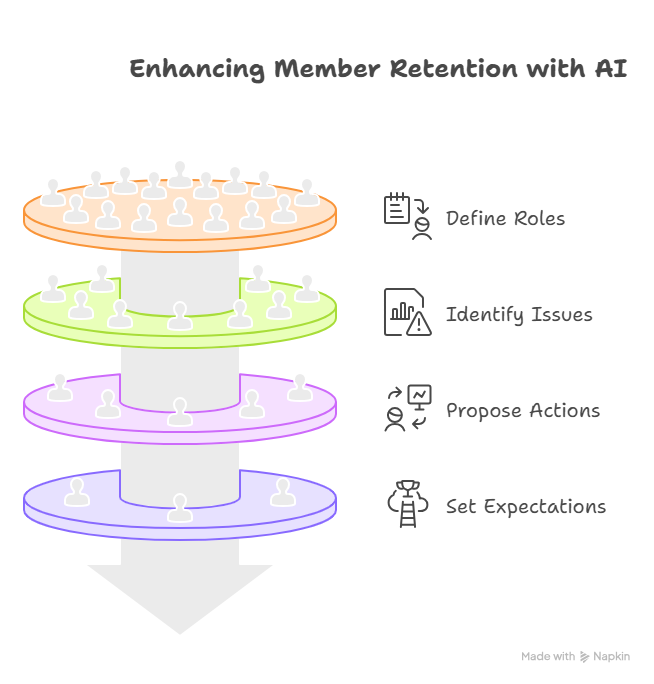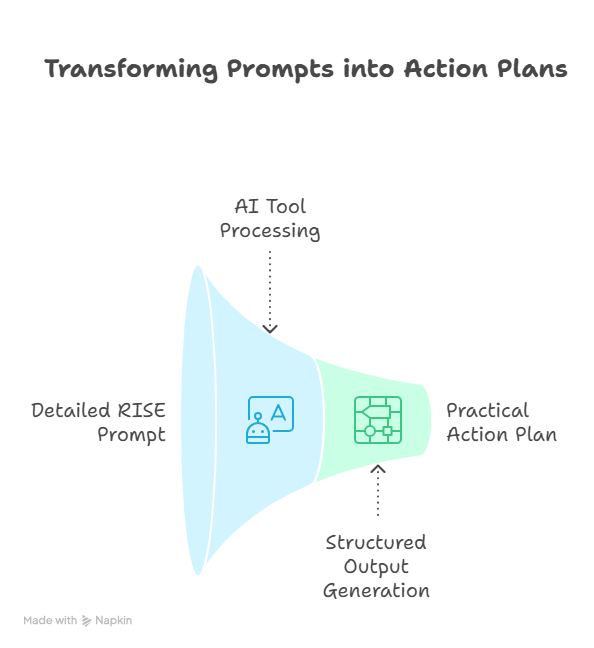
This article is part of our nine-part series on AI prompt frameworks for private clubs, adapted from research developed by Khizer Abbas and the team at Superhuman AI. Each framework is designed to help managers turn AI into a practical tool for solving everyday challenges inside clubs.
Attrition is one of the toughest problems facing private clubs. Research shows average annual turnover is around 4–5%, but clubs that lag on onboarding, programming, or technology often see much higher losses. Members may join for the amenities, but they stay for belonging, connection, and consistent value.
The R-I-S-E Framework helps managers approach retention in a structured way:
· Role: Who owns retention at your club? Membership Director? GM? Marketing? AI can help clarify accountability or even draft role descriptions tied to retention outcomes.
· Identify: What exactly is causing members to leave? Poor onboarding? Outdated programs? Weak communication? AI can analyze exit survey data, member usage, or engagement patterns to pinpoint issues.
· Steps: What actions will address those issues? From digital onboarding and personalized outreach to wellness programming and CRM segmentation, AI can propose actionable strategies.
· Expectations: What success looks like must be measurable. Lower attrition by 2% this year? Raise satisfaction scores? Increase event participation by 15%? AI can help frame these benchmarks.

By breaking retention into roles, causes, steps, and expectations, RISE reframes what can feel like a vague aspiration into a clear, solvable challenge.
Below is a sample prompt you can copy and paste directly into your preferred AI tool (ChatGPT, Claude, Copilot, Gemini, etc.). Notice how it uses the R-I-S-E structure explicitly.
“You are an experienced Membership Director who has worked at several private clubs with both high and mid-sized membership bases. You are an active participant in CMAA and PCMA, and you have a proven track record of designing programs that significantly improve member retention and engagement.
· Role: Act as this Membership Director, bringing your industry knowledge and retention expertise to analyze and advise.
· Identify: Review the attached exit survey summaries, event attendance reports, and CRM usage data. Identify the top three reasons members might leave our club.
· Steps: Recommend three actionable strategies that our club could implement over the next six months. These should be specific to private club environments (examples might include digital onboarding improvements, new social programming, or segmented member communications).
· Expectations: For each step, define measurable outcomes we should track, such as lowering attrition by 2%, raising quarterly engagement scores by 15%, or increasing event participation by 20%.”*
When managers copy and paste a detailed RISE prompt like this into their AI tool, they get a structured, practical action plan instead of vague, generic suggestions.

Managers can strengthen AI outputs by attaching club-specific documents. Examples include: - Exit survey summaries (to highlight actual reasons for departures).
- Event attendance reports (to spot engagement gaps).
- CRM usage data (golf rounds, dining visits, app logins).
- Programming calendars (to see if offerings align with member needs).
- Board or committee meeting notes on membership trends.
When AI has access to these, its recommendations move beyond generic ideas and become tailored to your club’s reality.
The most successful clubs treat retention as a top-level strategic issue, blending personal connection with digital convenience. The RISE Framework gives you a repeatable method to generate sharper, more actionable insights with AI.
Next up in this series: the STAR Framework, which focuses on reviewing programs and events for continuous improvement.